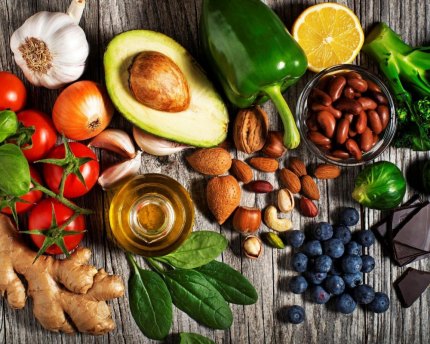
-- Jane Monroe, Scranton, Pennsylvania
Not to be confused with a low-carb diet, which involves avoiding carbohydrates (bread, rice, pasta) as a way to lose weight or keep it off, a low-carbon diet—limiting foods that generate high carbon (CO2) emissions in their production and distribution—is more about reducing your carbon footprint than your waistline. That said, proponents of a low-carbon diet say that eating with reduced greenhouse gas emissions in mind is healthier for us than the typical American diet, whereby carbon-intensive meat, dairy and processed foods occupy too large a share of our overall food intake.
A recent study from the University of Michigan Center for Sustainable Systems backs up these assertions. Researchers correlated data from the National Health and Nutrition Examination Survey—a snapshot of what 16,000 Americans consumed over one 24-hour period—with information on the nutritional value and greenhouse gas impacts of different food items, concluding that the better a diet is for the planet the better it is for our health. Furthermore, the 20 percent of Americans who eat what researchers consider a “high-carbon” diet (rich in red meat, dairy and exotic and processed foods) are responsible for almost half of the nation’s food-related CO2 emissions. Changing the behavior and food choices of this small segment of the population could pay big dividends for public health and for reducing our overall national carbon footprint.
The concept of a low-carbon diet was popularized in the U.S. by Bon Appétit Management Co., which runs more than 1,000 cafes in 33 states for corporations, universities and venues. In 2007, the company partnered with the nonprofit Ecotrust to compile and conduct Life Cycle Assessments—measuring the amount of CO2 emitted during a given food product’s entire life cycle—for thousands of different foods. These assessments became the basis for the food scores section of its EatLowCarbon.org website, which provides information to help people reduce their carbon footprints through food choices.
Besides launching EatLowCarbon.org, Bon Appétit’s managers embarked on a five-year internal campaign to ratchet down the emissions generated by the company’s own operations and offerings by 25 percent. The company stopped buying air-freighted seafood, reduced its use of tropical fruit by half, shrank beef purchases by 33 percent and cheese by 10 percent while cutting food waste by one-third. Overall these moves shaved some 5 million pounds of carbon emissions per month off Bon Appétit’s contribution to global warming.
The fact that food and the systems to produce and distribute it are responsible for about a third of all greenhouse gas emissions means that everyone has potential for fighting global warming through sourcing locally produced and in-season foods to minimize emissions-intensive food miles, buying only as much as we can eat to reduce waste, and minimizing consumption of red meat, dairy and processed foods. In the case of climate change, if we don’t watch what we eat, it could really come back to haunt us.
Related:
How to recycle food -- without the odor
Will the U.S. get zero waste grocery stores?
This column was reprinted with permission. EarthTalk is produced by Roddy Scheer and Doug Moss and is a registered trademark of the nonprofit Earth Action Network. To donate, visit www.earthtalk.org. Send questions to: question@earthtalk.org.
Like us on Facebook and tell us what you think.